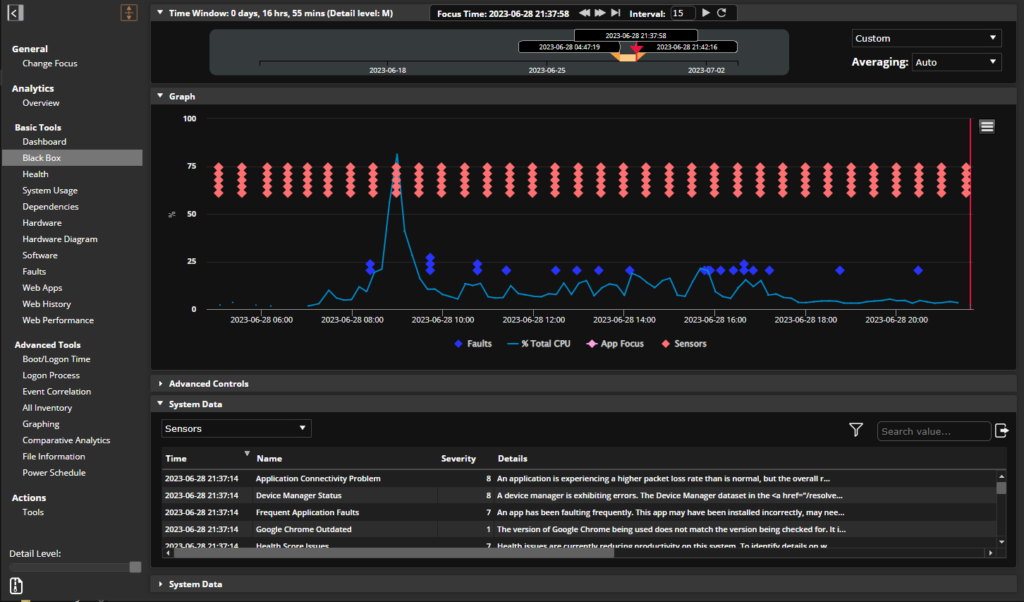Make EUX the Center of Your Digital Transformation Strategy

Steps organizations can take to foster a digital mindset and drive workplace innovation that prioritizes end users
Digital transformation is not just about technology. A successful digital strategy also requires a change in corporate culture, with all stakeholders embracing innovation and new ways of doing business. By focusing on end-user experience, organizations can ensure they make the most of their technology spending and foster the right mindset to drive change.
In response to the Covid-19 pandemic, companies have significantly increased their digital investments. As Microsoft CEO Satya Nadella wrote in his 2021 shareholder letter, “Digital transformation that was projected to happen over the next 10 years is happening today.”
Lockdown restrictions that interrupted in-person services and caused a major shift to remote forms of work forced organizations to rethink their modus operandi, modernizing their IT infrastructure, products, and services. But these digitalization trends are poised to continue post-pandemic, with direct digital transformation investments expected to grow to a compound annual growth rate of 16.5% in 2022-2024, based on an IDC forecast.
“In 2022 more than half the global economy will be based on or influenced by digital,” according to the report.
Digital Workplace Transformation Is Here to Stay
Organizations undergo digital workplace transformation for many reasons. Among the top rationales for those initiatives, Deloitte Digital Transformation Executive Survey 2021 listed:
1. Enabling innovation
2. Keeping up with the times
3. Responding to changes in their industry
4. Becoming more resilient
As organizations find themselves in different stages of their digital maturity, they face unique challenges, too. Their digital projects, after all, don’t look the same. Digital transformation examples include:
- IT infrastructure modernization for more efficiency and security
- Digitalization of services to better attend to customer needs and demands
- Operational scalability through initiatives such as VDI migration
- Business processes improvements with digital workflows to better meet key performance indicators (KPIs)
While organizations in the early stages of their digital maturity might be interested in quick wins, such as cost control, more digitally mature companies might work toward truly transforming their culture.
BLOG POST
Focus on 2022: Driving a Year of Workplace Transformation
Having a Digital Mindset Is Key
Deloitte’s research suggests that organizations with higher digital maturity tend to show a “digital mindset” and an inclination toward innovation. Key to this behavior is “to look at old problems with new eyes and to ask how data and technology can be applied to reinvent products and processes.”
The takeaway is that a successful digital transformation strategy requires a deep understanding of how end-user experience helps organizations meet their business goals. In other words, a digital transformation project won’t succeed without garnering employee support.
Enhanced Digital Experience Accelerates Innovation
If digital transformation starts with people, then digital experiences should be the cornerstone of your business strategy. According to Lakeside Software research on digital employee experience (DEX), all sides of the business agree on the importance of enhancing digital experience to support digital workplaces. Improvements in digital experience are needed in order to foster innovation, based on:
- 87% of surveyed C-level executives
- 93% of surveyed staff
- 90% of surveyed IT professionals
Investing in digital employee experience helps organizations overcome some common obstacles to digital transformation projects, such as a culture adverse to change and a workforce that’s not tech-savvy. By setting experience level agreements (XLAs), for example, the support desk team can help minimize IT issues and boost productivity and engagement. According to Lakeside’s The Future of Digital Workplaces report, workers believe they would be about 18% more productive with the right digital experience.
E-BOOK
Inside the Watermelon
How XLAs Deliver a Full Measure of Digital Employee Experience
How to Build Digital Transformation Projects that Emphasize End-User Technology Experience
Organizations won’t transform simply by investing in digital technology. You need the right talent, culture, processes, and IT visibility in your work environment.
Holistic visibility into the IT estate enables organizations to plan their digital initiatives and understand software and hardware usage. These are critical steps to maximize the return on investment (ROI) on technology purchases. For example, rolling out new software is not enough if the employees are not using it.
Don’t forget that digital tools can be intimidating. That’s why IT needs to track the way employees interact with workplace technology and what type of hurdles they encounter along the way. Being able to address their pain points proactively helps to boost productivity and engagement, leading to better digital business outcomes.
In order to incorporate end-user experience as part of your digital transformation agenda, consider the following steps:
Collect telemetry data from the endpoint
By gathering rich data from telemetry metrics, IT teams can monitor digital experience in real time and anticipate issues before they escalate. Historical data enables IT to perform effective root cause analysis, leading to a quicker incident resolution.
Use surveys to evaluate user sentiment
Organizations can use qualitative surveys to understand how users feel about digital workplace initiatives, including new deployments and service desk operations. Those insights are an opportunity to evaluate desktop transformation projects, for example.
Monitor application and hardware usage
Understanding workplace technology usage enables data-driven procurement decisions about hardware upgrades and software licenses, leading to better IT investments. For example, organizations can upgrade hardware based on employees’ needs rather than the age of the machine or traditional three- to five-year refresh cycles.
Invest in employee training and upskilling
Companies should make training and upskilling an integral part of their digital transformation agenda. As a PwC survey indicates, workers are willing to spend 12 hours per month on training to revamp their digital skills. Technology proficiency can also empower teams to perform their tasks more efficiently, boosting employee satisfaction and productivity.
Make digital dexterity a priority
Digital dexterity can help organizations accelerate their digital transformation agenda, as those competencies refer not only to the ability to use technology but also to the willingness to do so. In other words, digital dexterity involves the right mindset and openness to digital innovation.
Supercharge Your Digital Strategy
Discover how a holistic view of your IT estate ensures the successful implementation of your digital transformation initiatives. Request a customized demo.
Subscribe to the Lakeside Newsletter
Receive platform tips, release updates, news and more



